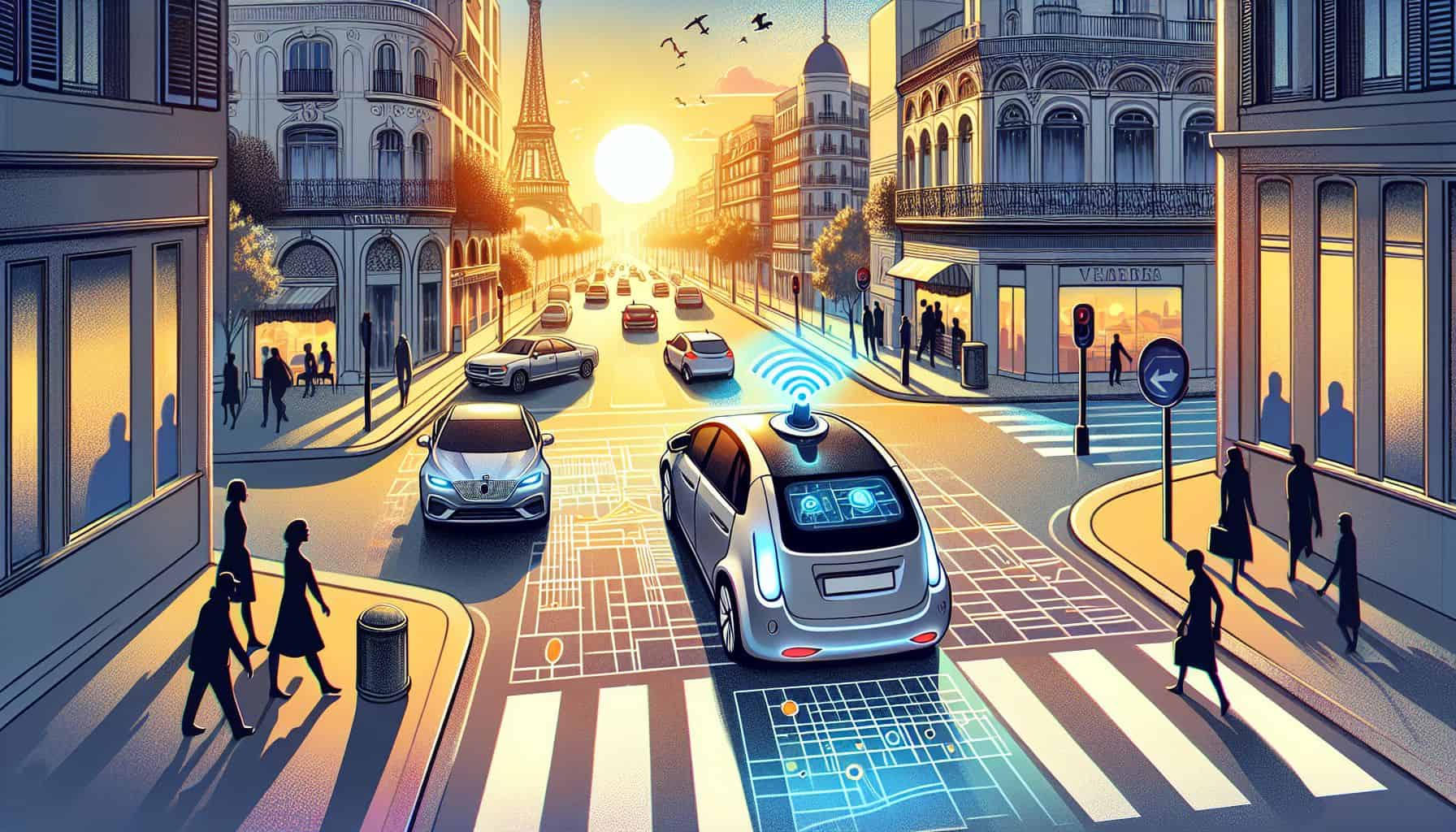
The self-driving car is on its way and will be for some time to come. It works just fine on the highway or on main roads. As long as there are no cyclists busy sending apps, pizza delivery riders zipping by on their scooters or any inattentive pedestrians nearby, a self-driving car without a steering wheel can function well enough. If there are any out on the roads, they will only be able to drive at very low speeds in order to have enough brake in time for unexpected incidents. Also, a self-driving car will have a tough time crossing busy roads if there are pedestrians constantly crossing over. In short, traffic congestion will likely increase.
In order to explore what technological solutions can help with this, I came up with the term, the self-propelled pedestrian, a pleonasm somewhat similar to the self-driving car.
Back on March 7, 2015, I wrote the blog below, which, except for the future interconnectivity of cars, still has relevance today.
Read a newspaper
With some simple, existing technologies, the car will be able to drive itself, at least on the highway. If a car is equipped with lane-keeping assist, adaptive cruise control and automatic brake assist systems, the driver can calmly read a newspaper or take a nap on the highway. These types of self-driving cars are usually featured in the news, with the year 2017 or 2020 tacked on.
It is much more difficult to make a self-driving car for in city traffic, because cyclists, pedestrians and mobility scooters are very unpredictable and the ‘robot car’ has absolutely no control over a pedestrian’s behavior. Besides, it is impossible for computer, radar, lidar, etc. systems to predict which intentions another road user may have. If a motorist is approaching on the left or right, it is the look in their eyes that is often the best predictor of their behavior. If their gaze is tense, then the road user intends to cross. If they are not staring so intensely or even seem a bit distracted, then they are willing to wait another round. Or they are under the influence of mind-altering substances. Systems that are installed on an ‘automated’ car do not yet have this predictive capability. Albeit there are developments in this area as well.
Systems that can gauge car driver fatigue through eye movements have been around for quite a while. In such cases, the driver could be advised to go and grab a cup of coffee. Of course, the technology is already advanced enough that other drivers in the vicinity can be notified that a driver who is not well-rested is approaching from the left. Yet the right to privacy still takes precedence. A step further can measure breathing, muscle tension, heart rate, perspiration and skin temperature. These readings change under the influence of stress, and stress levels tend to increase when crossing complicated intersections.
MRI inside the brain
Yet another step forward are predictions about human behavior that can be made by using a special MRI technique inside the brain. Neurologists at the University of Western Ontario (Canada) have been examining activity in several areas of the brain this way. By combining and interpreting that information, they can predict seconds in advance what movements a test subject will make next. Scientists at the University of Michigan have adapted this technology to make it mobile by inserting an implant into the skull that transmits signals to a small computer outside the body. This could also enable people with e.g. spinal cord injuries to still move their arms or legs. Technically speaking, this information could also be exchanged between cars and people so that trips around town would be slightly more comfortable.
Also read: A real-time signal from bicycles can reduce the number of serious accidents with cars
About this column
In a weekly column, written alternately by Wendy van Ierschot, Bert Overlack, Eveline van Zeeland, Eugene Franken, Jan Wouters, Helen Kardan, Katleen Gabriels, Mary Fiers and Hans Helsloot, Innovation Origins tries to figure out what the future will look like. These columnists, occasionally joined by guest bloggers, are all working in their own way on solutions to the problems of our time. So that tomorrow is good. Here are all the previous articles.








